|
|
|
GLOECKNER (Michiel)
Galerie 5
Affiche originale. Cassé Litho Paris. 1974. Impression en lithographie. Dim : 565 x 374 mm.
Ссылка продавца : 3809

|
|
|
Glueck, Grace; Menen, Aubrey; Kristol, Irving; Ephron, Nora; Navasky, Victor S.; Leonard, J.; Dove, Adrian; Peterson, P.; Blum, S.; et al
The New York Times Magazine, December (Dec.) 8, 1968 - Looking at What Happened to Czechoslovakia
200 pages. Features: Many glorious color-photo fashion ads and Christmas gift ideas; The Total Involvement of Thomas Hoving; Looking at What Happened to Czechoslovakia - The Yugoslavs say they will fight if....; A Different Way to Restructure the University; The Man in the Bill Blass Suit;- photo-illustrated article on fashion designer Bill Blass; The U.S. Attorney for 'New York South' - Robert S. Morgenthau; Che! (Guevara) - The Making of a Movie Revolutionary - photo-illustrated article on making the movie "Che!" starring Jack Palance and Omar Sharif; PBM ad features four color photos of Arnold Palmer in blazers; Soul Story; Centerfold ad for Gold Label Cigars; Color photo of Jack Carter in Thorne's Scotch ad; Great ad for Rooster square-bottom ties (remember those!); Nice one-page color ad for L'Oreal products; De-escalating the Violence on TV; Ron Rico Posters ad; and more. Somewhat above-average external wear. Covers partly loose. Unmarked. A worthy vintage copy. Book

|
|
|
Godefroy
Mandement de Mgr l'Archevêque de Rennes pour le Carême de 1873 sur les dangers qui menacent la foi (affiche)
Imprimerie de H. Vatar Affiche 1873 Affiche (52 x 67 cm), 4 colonnes de texte signées Godefroy, archevêque de Rennes et chanoine Villério ; quelques petites déchirures aux pliures, une petite mouillure discrète, par ailleurs bel état. Livraison a domicile (La Poste) ou en Mondial Relay sur simple demande.
Ссылка продавца : yk326
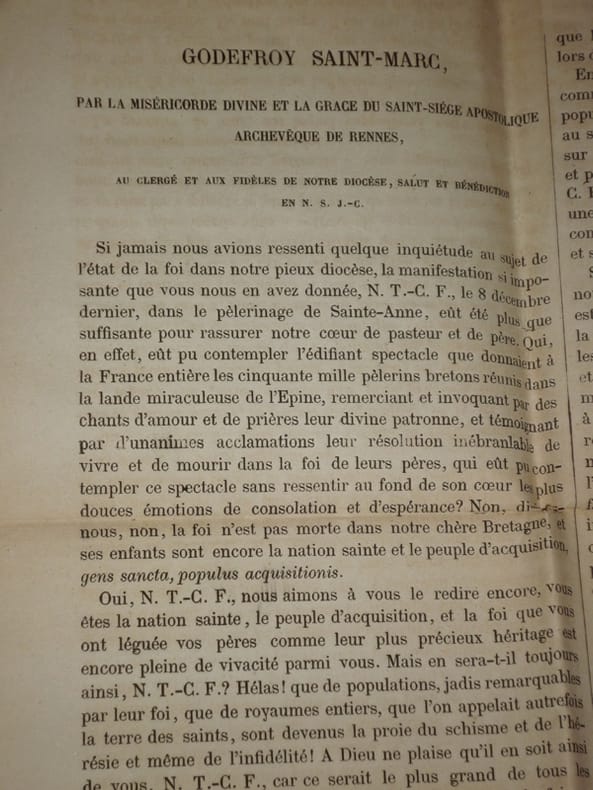
|
|
|
GODREAU Marcel, HUDE Didier
Paroles de Farfadets.
MINISTERE DE LA JEUNESSE ET DES SPORTS. Non daté. In-12. Broché. Bon état, Couv. convenable, Dos satisfaisant, Intérieur frais. Affiche illustrée en couleurs, de 60 / 40 cm. Représentant 3 personnes et un feu follet, dissimulés dans un chant de blé.. . . . Classification : 300-Affiches Divers
Ссылка продавца : RO80078803
|
|
|
GODREUIL, J.P. ;
UNISSONS NOUS ! Pour nos droits, pour la rénovation de la france et la défense de la république ;
Groupement National des Réfractaires et Maquisards, 1947 ; Affiche lithographiée de 79 x 59 cm.Imprimerie C.E.G. Paris.
Ссылка продавца : 384
|
|
|
Goines, David Lance
The David Lance Goines Poster Book.
Harmony books, 1978, un volume in folio broché, 47 planches hors texte toutes en couleurs, petites pliures angulaires au 1er plat de couverture, par ailleurs en excellent état
Ссылка продавца : 9802
|
|
|
GOLD (Bill)
THE ENFORCER - CLINT EASTWOOD IS DIRTY HARRY
Affiche originale. Warner Communication Company. 1976. Impression en offset, pliures d'origine. Dim : 1004 x 685 mm. Parfait état.
Ссылка продавца : 3725

|
|
|
GOLD (Bill)
THE ENFORCER - CLINT EASTWOOD IS DIRTY HARRY
Affiche originale. Warner Communication Company. 1976. Impression en offset, pliures d'origine. Dim : 1004 x 685 mm. Parfait état.
Ссылка продавца : 3725

|
|
|
GOLF TROPHEE WORMS. MATCHAVARIANI (Henri). Trophée Golf Novembre 1991 Banque Worms.
"Trophée Golf Novembre 1991 - Banque Worms".
1991 Pastel signé, 1991, 60.5 x 45.5 cm., encadré.
Ссылка продавца : 22427
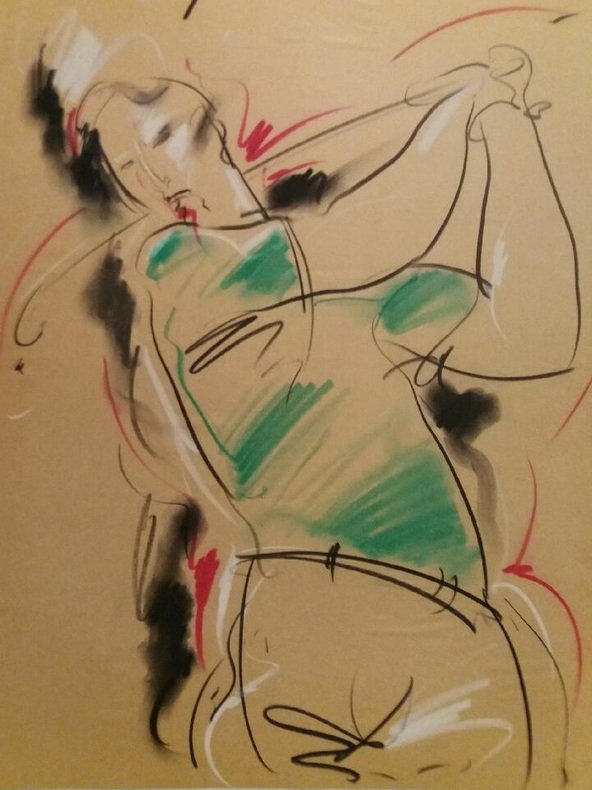
|
|
|
Goltzsche, Dieter
Dieter Goltzsche Aquarelle. 1990. [Signiertes Plakat, Offsetdruck / signed poster, offsetprint].
o.J. (Dieter Goltzsche, geboren am 28. Dezember 1934 in Dresden. Deutscher Maler, Zeichner und Grafiker. 1952 bis 1957 studierte er an der Hochschule für Bildende Künste Dresden bei Hans Theo Richter und Max Schwimmer. 1992 bis 2000 Professor für Malerei und Grafik an der Kunsthochschule Berlin-Weißensee). [3 Warenabbildungen]
Ссылка продавца : 60646BB

|
|
|
GONCOURT Edmond & Jules de STEINLEN Théophile Alexandre
"Bal de barrière" - Lithographie originale sur Japon - L'Estampe Moderne
- L'Estampe Moderne, Imprimerie Champenois pour CH. Masson & H. Piazza, Paris (Juin) 1898, sujet : 19,5x36cm, planche : 40,8x55cm, une feuille. - Rare lithographie originale, exécutée par Théophile Alexandre Steinlen pour L'Estampe Moderne, série numéro 14 publiée en juin 1898. Une des 50 épreuves de grand luxe tirées sur Japon à grandes marges, signature de l'artiste et date dans la planche, timbre à sec de l'éditeur représentant un profil d'enfant en marge inférieure, avec au dos le tampon numéroté du tirage de luxe, quelques rousseurs. Lithographie inspirée d'un extrait de Germinie Lacerteux des Goncourt. Magnifique publication mensuelle française éditée entre mai 1897 et avril 1899, L'Estampe moderne se constitue de chromolithographies inédites qui, contrairement à d'autres revues comme Les Maîtres de l'Affiche et tel qu'il est stipulé sur les serpentes, ont été réalisées spécialement par chaque artiste pour la revue. Ce sont ainsi 100 estampes qui paraissent au total, couvrant les courants artistiques majeurs de la fin du XIXème siècle : Symbolisme, Art Nouveau, Préraphaélites, Orientalistes et Belle Epoque. Chaque livraison de quatre estampes est tirée à 2000 exemplaires vendus 3,50F et 100 sur papier Japon proposés à 10F. Henri Piazza prévoit également un tirage confidentiel de très grand luxe : 50 exemplaires sur Japon à grandes marges et 50 en noir sur Chine au prix considérable de 30F. Cette estampe d'un beau format est superbement imprimée sur l'un des plus prestigieux papiers : le Chine. « Malgré toutes ses qualités, le papier de Chine, trop inconsistant, doit sa réputation, non pas à sa propre beauté, mais bien à ses affinités particulières avec l'encre d'impression. Son tissu, lisse et mou tout ensemble, est plus apte qu'aucun autre à recevoir un beau tirage. Cette propriété fait rechercher le papier de Chine pour le tirage des gravures... » (Anatole France). L'intérêt des collectionneurs français pour les affiches artistiques s'amplifie au début des années 1890. Octave Uzanne, pour qualifier cette fièvre invente le terme d'« affichomanie ». L'affiche, à l'origine populaire et placardée dans les rues de la capitale, devient alors objet d'art et son support éphémère se fait précieux et voué à la conservation. Piazza décide de soustraire l'affiche à sa vocation publicitaire et de l'élever au rang d'uvre d'art à part entière au même titre que le livre illustré de luxe. Il compose ainsi une collection prestigieuse d'uvres entièrement originales, par les artistes européens les plus en vue du moment : Georges de Feure, Eugène Grasset, Henri Detouche, Emile Berchmans, Louis Rhead, Gaston de Latenay, Lucien Lévy-Dhurmer, Gustave-Max Stevens, Charles Doudelet, Hans Christiansen, Henri Fantin-Latour, Steinlen, Ibels, Engels, Willette, Henri Meunier, Evenepoël, Bellery-Desfontaines, Charles Léandre, etc. Bel exemplaire. [ENGLISH DESCRIPTION ON DEMAND]

|
|
|
Gonizzi Giancarlo.
PASTA DA ESPOSIZIONE. La pubblicità Barilla dall'Affiche alla Grafica 1900-1950
(Codice GA/5426) In 8° (28 cm) 54 pp. Con moltei riproduzioni a colori. Brossura originale con risvolti, ottimo. ~~~ SPEDIZIONE IN ITALIA SEMPRE TRACCIATA

|
|
|
GONZALEZ TORRES FELIX (1957-1996)
Somewhere better than this place
affiche De La Série Endless Copies Offset Poster 580x740mm (102931)
Ссылка продавца : 102931
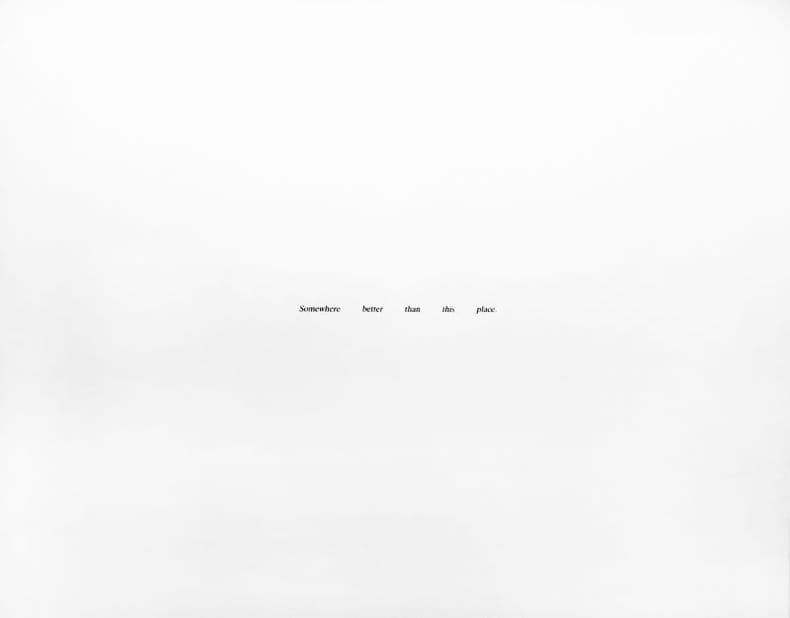
|
|
|
GONZALEZ TORRES FELIX (1957-1996)
Untitles (Double portrait)
1991 affiche Buffalo, Albright-Knox Art Gallery, 1991, feuille 695x985mm, double cercle imprimé en doré sur papier blanc en lithographie, provenant d’une pile de feuilles identiques présentée dans la galerie, chaque visiteur étant invité à emporter un exemplaire.(102933)
Ссылка продавца : 102933
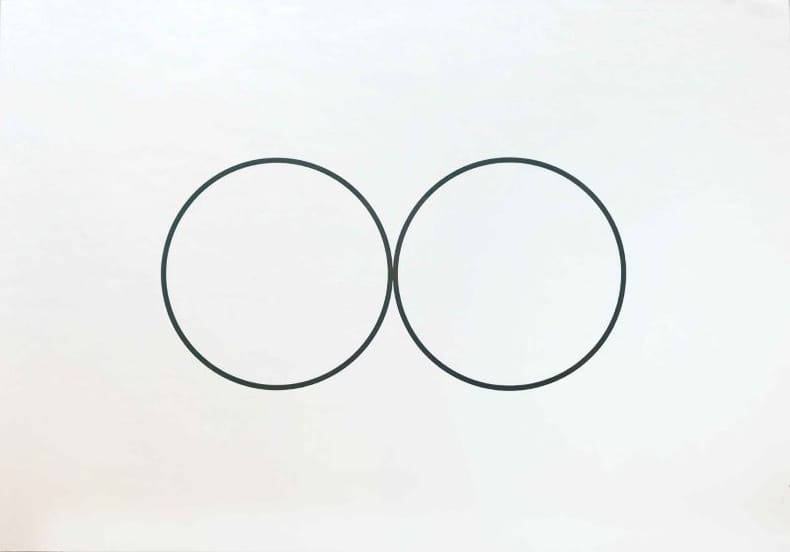
|
|
|
GORGUET Auguste François-Marie
"Andante Nocturne" - Lithographie originale sur Chine - L'Estampe Moderne
- L'Estampe Moderne, Imprimerie Champenois pour CH. Masson & H. Piazza, Paris (Octobre) 1897), sujet : 19x25cm, planche : 40,8x55cm, une feuille. - Rare lithographie originale exécutée par Auguste François-Marie Gorguet pour L'Estampe Moderne, série numéro 6 publiée en octobre 1897. Une des 50 épreuves de grand luxe tirées sur Chine à grandes marges, signature de l'artiste et date dans la planche, timbre à sec de l'éditeur représentant un profil d'enfant en marge inférieure, contrecollée sur un feuillet de papier vélin avec au dos le tampon numéroté du tirage de luxe, pâles rousseurs marginales. Magnifique publication mensuelle française éditée entre mai 1897 et avril 1899, L'Estampe moderne se constitue de chromolithographies inédites qui, contrairement à d'autres revues comme Les Maîtres de l'Affiche et tel qu'il est stipulé sur les serpentes, ont été réalisées spécialement par chaque artiste pour la revue. Ce sont ainsi 100 estampes qui paraissent au total, couvrant les courants artistiques majeurs de la fin du XIXème siècle : Symbolisme, Art Nouveau, Préraphaélites, Orientalistes et Belle Epoque. Chaque livraison de quatre estampes est tirée à 2000 exemplaires vendus 3,50F et 100 sur papier Japon proposés à 10F. Henri Piazza prévoit également un tirage confidentiel de très grand luxe : 50 exemplaires sur Japon à grandes marges et 50 en noir sur Chine au prix considérable de 30F. Cette estampe d'un beau format est superbement imprimée sur l'un des plus prestigieux papiers : le Chine. « Malgré toutes ses qualités, le papier de Chine, trop inconsistant, doit sa réputation, non pas à sa propre beauté, mais bien à ses affinités particulières avec l'encre d'impression. Son tissu, lisse et mou tout ensemble, est plus apte qu'aucun autre à recevoir un beau tirage. Cette propriété fait rechercher le papier de Chine pour le tirage des gravures... » (Anatole France). L'intérêt des collectionneurs français pour les affiches artistiques s'amplifie au début des années 1890. Octave Uzanne, pour qualifier cette fièvre invente le terme d'« affichomanie ». L'affiche, à l'origine populaire et placardée dans les rues de la capitale, devient alors objet d'art et son support éphémère se fait précieux et voué à la conservation. Piazza décide de soustraire l'affiche à sa vocation publicitaire et de l'élever au rang d'uvre d'art à part entière au même titre que le livre illustré de luxe. Il compose ainsi une collection prestigieuse d'uvres entièrement originales, par les artistes européens les plus en vue du moment : Georges de Feure, Eugène Grasset, Henri Detouche, Emile Berchmans, Louis Rhead, Gaston de Latenay, Lucien Lévy-Dhurmer, Gustave-Max Stevens, Charles Doudelet, Hans Christiansen, Henri Fantin-Latour, Steinlen, Ibels, Engels, Willette, Henri Meunier, Evenepoël, Bellery-Desfontaines, Charles Léandre, etc. Bel exemplaire dans le style symboliste de l'artiste. [ENGLISH DESCRIPTION ON DEMAND]

|
|
|
GORGUET Auguste François-Marie
"Andante Nocturne" - Lithographie originale sur Japon - L'Estampe Moderne
- L'Estampe Moderne, Imprimerie Champenois pour CH. Masson & H. Piazza, Paris (Octobre) 1897, sujet : 19x25cm, planche : 40,8x55cm, une feuille et une serpente. - Rare lithographie originale en couleurs, exécutée par Auguste François-Marie Gorguet pour L'Estampe Moderne, série numéro 6 publiée en octobre 1897. Une des 50 épreuves de grand luxe tirées sur Japon à grandes marges, signature de l'artiste et date dans la planche, timbre à sec de l'éditeur représentant un profil d'enfant en marge inférieure, tampon numéroté du tirage de luxe au dos ; gravure précédée d'une serpente légendée du nom de l'artiste, du titre, d'un poème et d'un texte de présentation ; et d'une autre serpente vierge. Magnifique publication mensuelle française éditée entre mai 1897 et avril 1899, L'Estampe moderne se constitue de chromolithographies inédites qui, contrairement à d'autres revues comme Les Maîtres de l'Affiche et tel qu'il est stipulé sur les serpentes, ont été réalisées spécialement par chaque artiste pour la revue. Ce sont ainsi 100 estampes qui paraissent au total, couvrant les courants artistiques majeurs de la fin du XIXème siècle : Symbolisme, Art Nouveau, Préraphaélites, Orientalistes et Belle Epoque. Chaque livraison de quatre estampes est tirée à 2000 exemplaires vendus 3,50F et 100 sur papier Japon proposés à 10F. Henri Piazza prévoit également un tirage confidentiel de très grand luxe : 50 exemplaires sur Japon à grandes marges et 50 en noir sur Chine au prix considérable de 30F. Cette estampe d'un beau format est superbement imprimée en couleurs sur le plus prestigieux des papiers : le Japon. Epais, soyeux, satiné et nacré, il contribue à faire de chaque page une uvre à part entière. Sa qualité d'absorption de l'encre et son affinité avec les couleurs en font également le support idéal de ces très belles lithographies. L'intérêt des collectionneurs français pour les affiches artistiques s'amplifie au début des années 1890. Octave Uzanne, pour qualifier cette fièvre invente le terme d'« affichomanie ». L'affiche, à l'origine populaire et placardée dans les rues de la capitale, devient alors objet d'art et son support éphémère se fait précieux et voué à la conservation. Piazza décide de soustraire l'affiche à sa vocation publicitaire et de l'élever au rang d'uvre d'art à part entière au même titre que le livre illustré de luxe. Il compose ainsi une collection prestigieuse d'uvres entièrement originales, par les artistes européens les plus en vue du moment : Georges de Feure, Eugène Grasset, Henri Detouche, Emile Berchmans, Louis Rhead, Gaston de Latenay, Lucien Lévy-Dhurmer, Gustave-Max Stevens, Charles Doudelet, Hans Christiansen, Henri Fantin-Latour, Steinlen, Ibels, Engels, Willette, Henri Meunier, Evenepoël, Bellery-Desfontaines, Charles Léandre, etc. Bel exemplaire dans le style symboliste de l'artiste. [ENGLISH DESCRIPTION ON DEMAND]

|
|
|
GORIN (Jean)
Centre National d'Art Contemporain
Affiche originale. Imprimerie Mourlot. 1969. Impression en lithographie. Dim : 604 x 442 mm.
Ссылка продавца : 3796

|
|
|
GORIN (Jean)
Centre National d'Art Contemporain
Affiche originale. Imprimerie Mourlot. 1969. Impression en lithographie. Dim : 604 x 442 mm.
Ссылка продавца : 3796

|
|
|
GOSE Francisco Javier
Il a été primé. Robe du soir (pl.21, La Gazette du Bon ton, 1914 n°3)
- Lucien Vogel éditeur, Paris Mars 1914, 19x24,5cm, une feuille. - Original color print, printed on vergé paper, signed in the plate. An original print used to illustrate the Gazette du bon ton, one of the most attractive and influential 20th century fashion magazines, featuring the talents of French artists and other contributors from the burgeoning Art Deco movement. A celebrated fashion magazine established in 1912 by Lucien Vogel, La Gazette du bon ton appeared until 1925, with a hiatus from 1915 to 1920 due to the war (the editor-in-chief having been called up for service). It consisted of 69 issues printed in only 2,000 copies each and notably illustrated with 573 color plates and 148 sketches of the models of the great designers. Right from the start, this sumptuous publication "was aimed at bibliophiles and fashionable society," (Françoise Tétart-Vittu, "La Gazette du bon ton", in Dictionnaire de la mode, 2016) and was printed on fine vergé paper using a type cut specially for the magazine by Georges Peignot, known as Cochin, later used (in 1946) by Christian Dior. The prints were made using stencils, heightened in colors, some highlighted in gold or palladium. The story began in 1912, when Lucien Vogel, a man of the world involved in fashion (he had already been part of the fashion magazine Femina) decided, with his wife Cosette de Brunhoff - the sister of Jean, creator of Babar - to set up the Gazette du bon ton, subtitled at the time: "Art, fashion, frivolities." Georges Charensol noted the reasoning of the editor-in-chief: "'In 1910,' he observed, 'there was no really artistic fashion magazine, nothing representative of the spirit of the time. My dream was therefore to make a luxury magazine with truly modern artists...I was assured of success, because when it comes to fashion, no country on earth can compete with France.'" ("Un grand éditeur d'art. Lucien Vogel" in Les Nouvelles littéraires, no. 133, May 1925). The magazine was immediately successful, not only in France but also in the United States and Latin America. At first, Vogel put together a team of seven artists: André-Édouard Marty and Pierre Brissaud, followed by Georges Lepape and Dammicourt, as well as eventually his friends from school and the School of Fine Arts, like George Barbier, Bernard Boutet de Monvel and Charles Martin. Other talented people soon came flocking to join the team: Guy Arnoux, Léon Bakst, Benito, Boutet de Monvel, Umberto Brunelleschi, Chas Laborde, Jean-Gabriel Domergue, Raoul Dufy, Édouard Halouze, Alexandre Iacovleff, Jean Émile Laboureur, Charles Loupot, Chalres Martin, Maggie Salcedo. These artist, mostly unknown when Lucien Vogel sought them out, later became emblematic and sought-after artistic figures. It was also they who worked on the advertising drawings for the Gazette. The plates put the spotlight on, and celebrate, dresses by seven designers of the age: Lanvin, Doeuillet, Paquin, Poiret, Worth, Vionnet and Doucet. The designers provided exclusive models for each issue. Nonetheless, some of the illustrations are not based on real models, but simply on the illustrator's conception of the fashion of the day. The Gazette du bon ton was an important step in the history of fashion. Combining aesthetic demands with the physical whole, it brought together - for the first time - the great talents of the artistic, literary, and fashion worlds; and imposed, through this alchemy, a completely new image of women: slender, independent and daring, which was shared by the new generation of designers, including Coco Chanel, Jean Patou, Marcel Rochas, and so on... Taken over in 1920 by Condé Montrose Nast, the Gazette du bon ton was an important influence on the new layout and aesthetics of that "little dying paper" that Nast had bought a few years earlier: Vogue. [FRENCH VERSION FOLLOWS] Estampe originale en couleur, tirée sur papier vergé, signée en bas à droite de la planche. Gravure originale réalisée pour l'il

|
|
|
GOSE Francisco Javier
Les Premières Roses. Costume Tailleur pour le matin (pl.2, La Gazette du Bon ton, 1912-1913 n°5)
- Lucien Vogel éditeur, Paris Mars 1913, 19x24,5cm, une feuille. - Original color print, printed on vergé paper, signed in the plate. An original print used to illustrate the Gazette du bon ton, one of the most attractive and influential 20th century fashion magazines, featuring the talents of French artists and other contributors from the burgeoning Art Deco movement. A celebrated fashion magazine established in 1912 by Lucien Vogel, La Gazette du bon ton appeared until 1925, with a hiatus from 1915 to 1920 due to the war (the editor-in-chief having been called up for service). It consisted of 69 issues printed in only 2,000 copies each and notably illustrated with 573 color plates and 148 sketches of the models of the great designers. Right from the start, this sumptuous publication "was aimed at bibliophiles and fashionable society," (Françoise Tétart-Vittu, "La Gazette du bon ton", in Dictionnaire de la mode, 2016) and was printed on fine vergé paper using a type cut specially for the magazine by Georges Peignot, known as Cochin, later used (in 1946) by Christian Dior. The prints were made using stencils, heightened in colors, some highlighted in gold or palladium. The story began in 1912, when Lucien Vogel, a man of the world involved in fashion (he had already been part of the fashion magazine Femina) decided, with his wife Cosette de Brunhoff - the sister of Jean, creator of Babar - to set up the Gazette du bon ton, subtitled at the time: "Art, fashion, frivolities." Georges Charensol noted the reasoning of the editor-in-chief: "'In 1910,' he observed, 'there was no really artistic fashion magazine, nothing representative of the spirit of the time. My dream was therefore to make a luxury magazine with truly modern artists...I was assured of success, because when it comes to fashion, no country on earth can compete with France.'" ("Un grand éditeur d'art. Lucien Vogel" in Les Nouvelles littéraires, no. 133, May 1925). The magazine was immediately successful, not only in France but also in the United States and Latin America. At first, Vogel put together a team of seven artists: André-Édouard Marty and Pierre Brissaud, followed by Georges Lepape and Dammicourt, as well as eventually his friends from school and the School of Fine Arts, like George Barbier, Bernard Boutet de Monvel and Charles Martin. Other talented people soon came flocking to join the team: Guy Arnoux, Léon Bakst, Benito, Boutet de Monvel, Umberto Brunelleschi, Chas Laborde, Jean-Gabriel Domergue, Raoul Dufy, Édouard Halouze, Alexandre Iacovleff, Jean Émile Laboureur, Charles Loupot, Chalres Martin, Maggie Salcedo. These artist, mostly unknown when Lucien Vogel sought them out, later became emblematic and sought-after artistic figures. It was also they who worked on the advertising drawings for the Gazette. The plates put the spotlight on, and celebrate, dresses by seven designers of the age: Lanvin, Doeuillet, Paquin, Poiret, Worth, Vionnet and Doucet. The designers provided exclusive models for each issue. Nonetheless, some of the illustrations are not based on real models, but simply on the illustrator's conception of the fashion of the day. The Gazette du bon ton was an important step in the history of fashion. Combining aesthetic demands with the physical whole, it brought together - for the first time - the great talents of the artistic, literary, and fashion worlds; and imposed, through this alchemy, a completely new image of women: slender, independent and daring, which was shared by the new generation of designers, including Coco Chanel, Jean Patou, Marcel Rochas, and so on... Taken over in 1920 by Condé Montrose Nast, the Gazette du bon ton was an important influence on the new layout and aesthetics of that "little dying paper" that Nast had bought a few years earlier: Vogue. [FRENCH VERSION FOLLOWS] Estampe originale en couleur, tirée sur papier vergé et signée en bas à droite dans la planche. Gravure originale réalisée pour

|
|
|
GOSE Francisco Javier
Suis-je belle ce soir ? Robe pour le casino (pl.63, La Gazette du Bon ton, 1914 n°7)
- Lucien Vogel éditeur, Paris Juillet 1914, 18x24cm, une feuille. - Double original color print, printed on vergé paper, signed in the plate. An original print used to illustrate the Gazette du bon ton, one of the most attractive and influential 20th century fashion magazines, featuring the talents of French artists and other contributors from the burgeoning Art Deco movement. A celebrated fashion magazine established in 1912 by Lucien Vogel, La Gazette du bon ton appeared until 1925, with a hiatus from 1915 to 1920 due to the war (the editor-in-chief having been called up for service). It consisted of 69 issues printed in only 2,000 copies each and notably illustrated with 573 color plates and 148 sketches of the models of the great designers. Right from the start, this sumptuous publication "was aimed at bibliophiles and fashionable society," (Françoise Tétart-Vittu, "La Gazette du bon ton", in Dictionnaire de la mode, 2016) and was printed on fine vergé paper using a type cut specially for the magazine by Georges Peignot, known as Cochin, later used (in 1946) by Christian Dior. The prints were made using stencils, heightened in colors, some highlighted in gold or palladium. The story began in 1912, when Lucien Vogel, a man of the world involved in fashion (he had already been part of the fashion magazine Femina) decided, with his wife Cosette de Brunhoff - the sister of Jean, creator of Babar - to set up the Gazette du bon ton, subtitled at the time: "Art, fashion, frivolities." Georges Charensol noted the reasoning of the editor-in-chief: "'In 1910,' he observed, 'there was no really artistic fashion magazine, nothing representative of the spirit of the time. My dream was therefore to make a luxury magazine with truly modern artists...I was assured of success, because when it comes to fashion, no country on earth can compete with France.'" ("Un grand éditeur d'art. Lucien Vogel" in Les Nouvelles littéraires, no. 133, May 1925). The magazine was immediately successful, not only in France but also in the United States and Latin America. At first, Vogel put together a team of seven artists: André-Édouard Marty and Pierre Brissaud, followed by Georges Lepape and Dammicourt, as well as eventually his friends from school and the School of Fine Arts, like George Barbier, Bernard Boutet de Monvel and Charles Martin. Other talented people soon came flocking to join the team: Guy Arnoux, Léon Bakst, Benito, Boutet de Monvel, Umberto Brunelleschi, Chas Laborde, Jean-Gabriel Domergue, Raoul Dufy, Édouard Halouze, Alexandre Iacovleff, Jean Émile Laboureur, Charles Loupot, Chalres Martin, Maggie Salcedo. These artist, mostly unknown when Lucien Vogel sought them out, later became emblematic and sought-after artistic figures. It was also they who worked on the advertising drawings for the Gazette. The plates put the spotlight on, and celebrate, dresses by seven designers of the age: Lanvin, Doeuillet, Paquin, Poiret, Worth, Vionnet and Doucet. The designers provided exclusive models for each issue. Nonetheless, some of the illustrations are not based on real models, but simply on the illustrator's conception of the fashion of the day. The Gazette du bon ton was an important step in the history of fashion. Combining aesthetic demands with the physical whole, it brought together - for the first time - the great talents of the artistic, literary, and fashion worlds; and imposed, through this alchemy, a completely new image of women: slender, independent and daring, which was shared by the new generation of designers, including Coco Chanel, Jean Patou, Marcel Rochas, and so on... Taken over in 1920 by Condé Montrose Nast, the Gazette du bon ton was an important influence on the new layout and aesthetics of that "little dying paper" that Nast had bought a few years earlier: Vogue. [FRENCH VERSION FOLLOWS] Estampe double originale en couleur, tirée sur papier vergé, signée en bas à droite de la planche. Gravure originale réa

|
|
|
GOSE Georges
L'Arbre de mai. Robes simples pour l'été (pl.42, La Gazette du Bon ton, 1914 n°5)
- Lucien Vogel éditeur, Paris Mai 1914, 36,5x24cm, une feuille. - Double original color print heightened with gold, printed on vergé paper, signed in the plate. An original print used to illustrate the Gazette du bon ton, one of the most attractive and influential 20th century fashion magazines, featuring the talents of French artists and other contributors from the burgeoning Art Deco movement. A celebrated fashion magazine established in 1912 by Lucien Vogel, La Gazette du bon ton appeared until 1925, with a hiatus from 1915 to 1920 due to the war (the editor-in-chief having been called up for service). It consisted of 69 issues printed in only 2,000 copies each and notably illustrated with 573 color plates and 148 sketches of the models of the great designers. Right from the start, this sumptuous publication "was aimed at bibliophiles and fashionable society," (Françoise Tétart-Vittu, "La Gazette du bon ton", in Dictionnaire de la mode, 2016) and was printed on fine vergé paper using a type cut specially for the magazine by Georges Peignot, known as Cochin, later used (in 1946) by Christian Dior. The prints were made using stencils, heightened in colors, some highlighted in gold or palladium. The story began in 1912, when Lucien Vogel, a man of the world involved in fashion (he had already been part of the fashion magazine Femina) decided, with his wife Cosette de Brunhoff - the sister of Jean, creator of Babar - to set up the Gazette du bon ton, subtitled at the time: "Art, fashion, frivolities." Georges Charensol noted the reasoning of the editor-in-chief: "'In 1910,' he observed, 'there was no really artistic fashion magazine, nothing representative of the spirit of the time. My dream was therefore to make a luxury magazine with truly modern artists...I was assured of success, because when it comes to fashion, no country on earth can compete with France.'" ("Un grand éditeur d'art. Lucien Vogel" in Les Nouvelles littéraires, no. 133, May 1925). The magazine was immediately successful, not only in France but also in the United States and Latin America. At first, Vogel put together a team of seven artists: André-Édouard Marty and Pierre Brissaud, followed by Georges Lepape and Dammicourt, as well as eventually his friends from school and the School of Fine Arts, like George Barbier, Bernard Boutet de Monvel and Charles Martin. Other talented people soon came flocking to join the team: Guy Arnoux, Léon Bakst, Benito, Boutet de Monvel, Umberto Brunelleschi, Chas Laborde, Jean-Gabriel Domergue, Raoul Dufy, Édouard Halouze, Alexandre Iacovleff, Jean Émile Laboureur, Charles Loupot, Chalres Martin, Maggie Salcedo. These artist, mostly unknown when Lucien Vogel sought them out, later became emblematic and sought-after artistic figures. It was also they who worked on the advertising drawings for the Gazette. The plates put the spotlight on, and celebrate, dresses by seven designers of the age: Lanvin, Doeuillet, Paquin, Poiret, Worth, Vionnet and Doucet. The designers provided exclusive models for each issue. Nonetheless, some of the illustrations are not based on real models, but simply on the illustrator's conception of the fashion of the day. The Gazette du bon ton was an important step in the history of fashion. Combining aesthetic demands with the physical whole, it brought together - for the first time - the great talents of the artistic, literary, and fashion worlds; and imposed, through this alchemy, a completely new image of women: slender, independent and daring, which was shared by the new generation of designers, including Coco Chanel, Jean Patou, Marcel Rochas, and so on... Taken over in 1920 by Condé Montrose Nast, the Gazette du bon ton was an important influence on the new layout and aesthetics of that "little dying paper" that Nast had bought a few years earlier: Vogue. [FRENCH VERSION FOLLOWS] Estampe double originale en couleur rehaussée à l'or, tirée sur papier vergé, signée en bas à gauche

|
|
|
Got Yves:
Impressions.
PMJ. Sérigraphie au format 39 x 28 cm., à l'état de neuf.
Ссылка продавца : 2901

|
|
|
Got Yves:
Petite sérigraphie.
Petite sérigraphie coquine, format carte postale. A l'état de neuf.
Ссылка продавца : 968
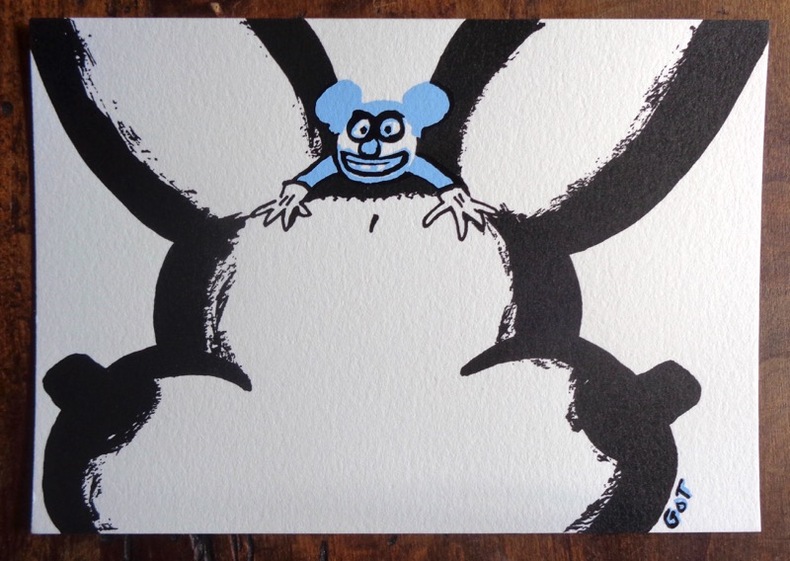
|
|
|
Got Yves:
Tabouret.
PMJ. Sérigraphie au format 39 x 28 cm., à l'état de neuf.
Ссылка продавца : 2898
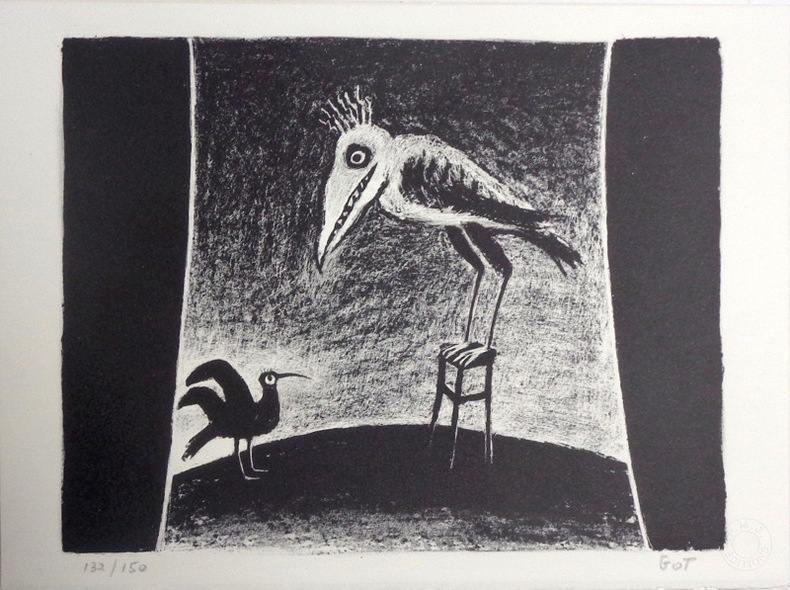
|
|
|
GOTTLOB F.
SOUVENEZ-VOUS ...
Tentatives de paix par l’Allemagne : refus catégorique de la France. Très violente affiche dénonçant les atrocités commises par les “ Boches “. Édition de la Ligue “Souvenez-vous”. en feuille Paris Atelier GOTTLOB F. 1917 550 x 350
Ссылка продавца : 262

|
|
|
GOTTLOB Fernand
Remember! This hun who bombed, burned and pillaged and this commercial traveller who call for your orders want sell his wares… are one and the same man! Never forget it!
Paris, Atelier F. Gottlob, (1919). Affiche illustrée de 34 x 54 cm (petits manques marginaux et au centre).
Ссылка продавца : 9662
|
|
|
GOTTLOB Fernand-Louis
Lithographie originale en couleurs : "Salon des Cent. Etudes de F. Gottlob" - Les Maîtres de l'Affiche - planche 239
- Les Maîtres de l'Affiche - imprimerie Chaix, Paris 1900, 29x39,9cm, une affiche lithographiée sur vélin fin. - Lithographie originale en couleurs tirée sur vélin fin. Timbre à sec de l'imprimeur en bas à droite de la planche. Superbe publication mensuelle française, les Maîtres de l'Affiche, parut entre 1895 et 1900 à l'initiative de Jules Chéret. Chaque numéro de la revue comprend quatre affiches reproduites au format cloche et en chromolithographie présentant pour chacune un timbre à sec d'authentification. Belle affiche en dépit d'un petit manque angulaire en marge basse gauche de la planche et d'une déchirure habilement comblée au verso en marge droite. [ENGLISH DESCRIPTION ON DEMAND]

|
|
|
GOUDIACHVILI Lado
Marchand de yaourt (pl.40, La Gazette du Bon ton, 1924-1925 n°5)
- Lucien Vogel éditeur, Paris 1924-1925, 18x24cm, une feuille. - Original color print, printed on vergé paper, non signed. An original print used to illustrate the Gazette du bon ton, one of the most attractive and influential 20th century fashion magazines, featuring the talents of French artists and other contributors from the burgeoning Art Deco movement. A celebrated fashion magazine established in 1912 by Lucien Vogel, La Gazette du bon ton appeared until 1925, with a hiatus from 1915 to 1920 due to the war (the editor-in-chief having been called up for service). It consisted of 69 issues printed in only 2,000 copies each and notably illustrated with 573 color plates and 148 sketches of the models of the great designers. Right from the start, this sumptuous publication "was aimed at bibliophiles and fashionable society," (Françoise Tétart-Vittu, "La Gazette du bon ton", in Dictionnaire de la mode, 2016) and was printed on fine vergé paper using a type cut specially for the magazine by Georges Peignot, known as Cochin, later used (in 1946) by Christian Dior. The prints were made using stencils, heightened in colors, some highlighted in gold or palladium. The story began in 1912, when Lucien Vogel, a man of the world involved in fashion (he had already been part of the fashion magazine Femina) decided, with his wife Cosette de Brunhoff - the sister of Jean, creator of Babar - to set up the Gazette du bon ton, subtitled at the time: "Art, fashion, frivolities." Georges Charensol noted the reasoning of the editor-in-chief: "'In 1910,' he observed, 'there was no really artistic fashion magazine, nothing representative of the spirit of the time. My dream was therefore to make a luxury magazine with truly modern artists...I was assured of success, because when it comes to fashion, no country on earth can compete with France.'" ("Un grand éditeur d'art. Lucien Vogel" in Les Nouvelles littéraires, no. 133, May 1925). The magazine was immediately successful, not only in France but also in the United States and Latin America. At first, Vogel put together a team of seven artists: André-Édouard Marty and Pierre Brissaud, followed by Georges Lepape and Dammicourt, as well as eventually his friends from school and the School of Fine Arts, like George Barbier, Bernard Boutet de Monvel and Charles Martin. Other talented people soon came flocking to join the team: Guy Arnoux, Léon Bakst, Benito, Boutet de Monvel, Umberto Brunelleschi, Chas Laborde, Jean-Gabriel Domergue, Raoul Dufy, Édouard Halouze, Alexandre Iacovleff, Jean Émile Laboureur, Charles Loupot, Chalres Martin, Maggie Salcedo. These artist, mostly unknown when Lucien Vogel sought them out, later became emblematic and sought-after artistic figures. It was also they who worked on the advertising drawings for the Gazette. The plates put the spotlight on, and celebrate, dresses by seven designers of the age: Lanvin, Doeuillet, Paquin, Poiret, Worth, Vionnet and Doucet. The designers provided exclusive models for each issue. Nonetheless, some of the illustrations are not based on real models, but simply on the illustrator's conception of the fashion of the day. The Gazette du bon ton was an important step in the history of fashion. Combining aesthetic demands with the physical whole, it brought together - for the first time - the great talents of the artistic, literary, and fashion worlds; and imposed, through this alchemy, a completely new image of women: slender, independent and daring, which was shared by the new generation of designers, including Coco Chanel, Jean Patou, Marcel Rochas, and so on... Taken over in 1920 by Condé Montrose Nast, the Gazette du bon ton was an important influence on the new layout and aesthetics of that "little dying paper" that Nast had bought a few years earlier: Vogue. [FRENCH VERSION FOLLOWS] Estampe originale en couleur, tirée sur papier vergé, non-signée. Gravure originale réalisée pour l'illustration de La Gazette du bon ton

|
|
|
GOUDIACHVILI Lado
Paysage (pl.39, La Gazette du Bon ton, 1924-1925 n°5)
- Lucien Vogel éditeur, Paris 1924-1925, 18x24cm, une feuille. - Original color print, printed on vergé paper, signed in the plate. An original print used to illustrate the Gazette du bon ton, one of the most attractive and influential 20th century fashion magazines, featuring the talents of French artists and other contributors from the burgeoning Art Deco movement. A celebrated fashion magazine established in 1912 by Lucien Vogel, La Gazette du bon ton appeared until 1925, with a hiatus from 1915 to 1920 due to the war (the editor-in-chief having been called up for service). It consisted of 69 issues printed in only 2,000 copies each and notably illustrated with 573 color plates and 148 sketches of the models of the great designers. Right from the start, this sumptuous publication "was aimed at bibliophiles and fashionable society," (Françoise Tétart-Vittu, "La Gazette du bon ton", in Dictionnaire de la mode, 2016) and was printed on fine vergé paper using a type cut specially for the magazine by Georges Peignot, known as Cochin, later used (in 1946) by Christian Dior. The prints were made using stencils, heightened in colors, some highlighted in gold or palladium. The story began in 1912, when Lucien Vogel, a man of the world involved in fashion (he had already been part of the fashion magazine Femina) decided, with his wife Cosette de Brunhoff - the sister of Jean, creator of Babar - to set up the Gazette du bon ton, subtitled at the time: "Art, fashion, frivolities." Georges Charensol noted the reasoning of the editor-in-chief: "'In 1910,' he observed, 'there was no really artistic fashion magazine, nothing representative of the spirit of the time. My dream was therefore to make a luxury magazine with truly modern artists...I was assured of success, because when it comes to fashion, no country on earth can compete with France.'" ("Un grand éditeur d'art. Lucien Vogel" in Les Nouvelles littéraires, no. 133, May 1925). The magazine was immediately successful, not only in France but also in the United States and Latin America. At first, Vogel put together a team of seven artists: André-Édouard Marty and Pierre Brissaud, followed by Georges Lepape and Dammicourt, as well as eventually his friends from school and the School of Fine Arts, like George Barbier, Bernard Boutet de Monvel and Charles Martin. Other talented people soon came flocking to join the team: Guy Arnoux, Léon Bakst, Benito, Boutet de Monvel, Umberto Brunelleschi, Chas Laborde, Jean-Gabriel Domergue, Raoul Dufy, Édouard Halouze, Alexandre Iacovleff, Jean Émile Laboureur, Charles Loupot, Chalres Martin, Maggie Salcedo. These artist, mostly unknown when Lucien Vogel sought them out, later became emblematic and sought-after artistic figures. It was also they who worked on the advertising drawings for the Gazette. The plates put the spotlight on, and celebrate, dresses by seven designers of the age: Lanvin, Doeuillet, Paquin, Poiret, Worth, Vionnet and Doucet. The designers provided exclusive models for each issue. Nonetheless, some of the illustrations are not based on real models, but simply on the illustrator's conception of the fashion of the day. The Gazette du bon ton was an important step in the history of fashion. Combining aesthetic demands with the physical whole, it brought together - for the first time - the great talents of the artistic, literary, and fashion worlds; and imposed, through this alchemy, a completely new image of women: slender, independent and daring, which was shared by the new generation of designers, including Coco Chanel, Jean Patou, Marcel Rochas, and so on... Taken over in 1920 by Condé Montrose Nast, the Gazette du bon ton was an important influence on the new layout and aesthetics of that "little dying paper" that Nast had bought a few years earlier: Vogue. [FRENCH VERSION FOLLOWS] Estampe originale en couleur, tirée sur papier vergé, signée en bas à gauche de la planche. Gravure originale réalisée pour l'illu

|
|
|
GOUILLOUX (Noël).
Menu illustré d'une gravure originale signée.
Paris Les Impénitents 1973 2 vol. Broché Menu dépliant sur Arches illustré d'une eau-forte (14 x 7 cm) signée par Noël Gouilloux. En parfait état.
Ссылка продавца : 109103
|
|
|
GOUILLOUX (Noël).
Menu illustré d'une gravure originale signée.
Paris Les Impénitents 1973 2 vol. Broché Menu dépliant sur Arches illustré d'une eau-forte (14 x 7 cm) signée par Noël Gouilloux. En parfait état.
Ссылка продавца : 109103
|
|
|
Gourévitch Jean-Paul,Piens Bernard
L'Imagerie de propagande : Evolution et stratégies de communication de l'affiche
CNDP Dos carré collé 1982 In-8 (16,7 x 21 cm), dos carré collé, XXVII pages + fiches détachables in fine, illustrations en noir et blanc ; pliure au premier plat, par ailleurs bon état. Livraison a domicile (La Poste) ou en Mondial Relay sur simple demande.
Ссылка продавца : gu3819
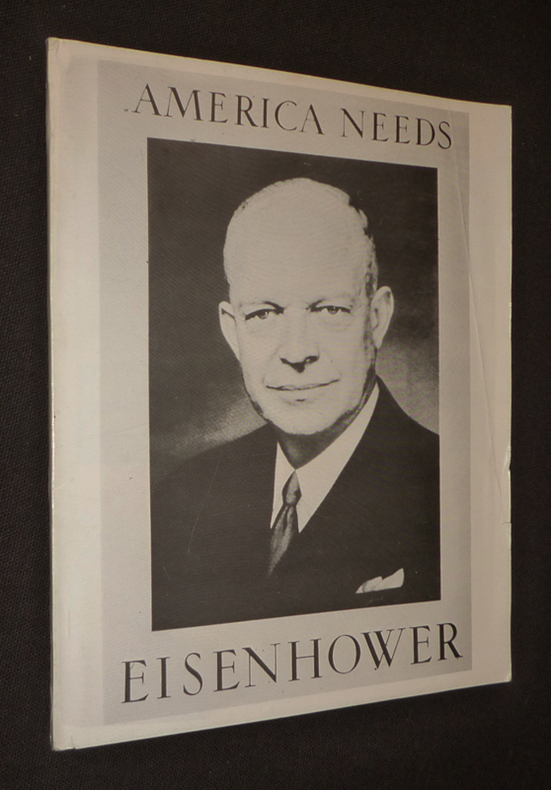
|
|
|
GOUVERNEMENT MILITAIRE DE PARIS
Adresse de Galliéni à l’Armée et aux Habitants de Paris: «Les membres du Gouvernement de la République ont quitté Paris pour donner une impulsion nouvelle à la Défense Nationale. J’ai reçu le mandat de défendre Paris contre l’envahisseur. Ce mandat, je le remplirai jusqu'au bout. 3 Septembre 1914».
P., Marcel Picard, (1914). Affiche imprimée de 64 x 49 cm en bon état.
Ссылка продавца : 9663
|
|
|
GOUVERNEMENT MILITAIRE DE PARIS
Permissionnaires! Evitez de vous mêler à toute manifestation publique. Dans votre intérêt. Dans l’intérêt du Pays.
Sans lieu ni date (1916-1918). Placard de 38 x 48cm (accroc aux marges).
Ссылка продавца : 9664
|
|
|
Graf, Rudolf (Rudi)
?Montmartre. Im Haus der Kunst?.
Ohne Ort (wohl München), ohne Verlag bzw. Drucker, o. J. (1955). Farb. Siebdruck-Plakat (60 x 81,8 cm).
Ссылка продавца : 65763

|
|
|
GRAFIK-MAN:
Die Geisel von Brendan Behan. Mit Musik von den Schmetterlinen. Schauspielhaus.
An den Ecken mit kleinen von entfernten Reisszwecken, insgesamt gut erhalten.
|
|
|
GRAHL August
Portrait d'Adolphus de Lepel (1783-1847) par August Grahl
- Rome 1824, 9,7x13cm, une feuille sous marie-louise. - Portrait original au crayon d'Adolphus de Lepel par August Grahl, signé AG, 1824, Rome Dessin représentant Adolphus de Lepel, membre de la noblesse poméranienne, frère du comte Friedrich Wilhelm de Lepel (1774-1840), général et aide de camp du prince Henri de Prusse depuis 1813. Adolphus partit un temps à Rome, comme son frère qui accompagnait le long séjour du prince Henri à Rome. Présent dans les cercles artistiques entre Berlin et Rome, il fit réaliser ce portrait en 1825 par August Grahl. Ce miniaturiste allemand, revient en Italie en 1821 après un premier voyage en 1817. Après avoir visité Venise, Bologne et Florence il s'installe à Rome où il réside jusqu'en 1830. [ENGLISH DESCRIPTION ON DEMAND]

|
|
|
GRAND (J.J)
Oeuvres Africaines Nouvelles - Peintures, sculptures
Affiche originale. Musée de l'Homme. Cosmos Paris. sans date. Impression en offset. Dim : 600 x 400 mm.
Ссылка продавца : 3912

|
|
|
GRAND (J.J)
Oeuvres Africaines Nouvelles - Peintures, sculptures
Affiche originale. Musée de l'Homme. Cosmos Paris. sans date. Impression en offset. Dim : 600 x 400 mm.
Ссылка продавца : 3912

|
|
|
GRAND CASINO DE CONTREXEVILLE
"Programme du Grand Casino de Contrexeville, du 14 août 1904 : "" L'Enfant du Miracle "". Comédie-Bouffe en 3 actes de MM. Paul Gavault et Robert Chartay."
IMP. HERPIN A., Alençon.. 1904. In-12. Broché. Bon état, Couv. convenable, Dos satisfaisant, Intérieur frais. 1 page imprimée de 31.5 x 24 cm.. . . . Classification : 300-Affiches Divers
Ссылка продавца : RO80088892
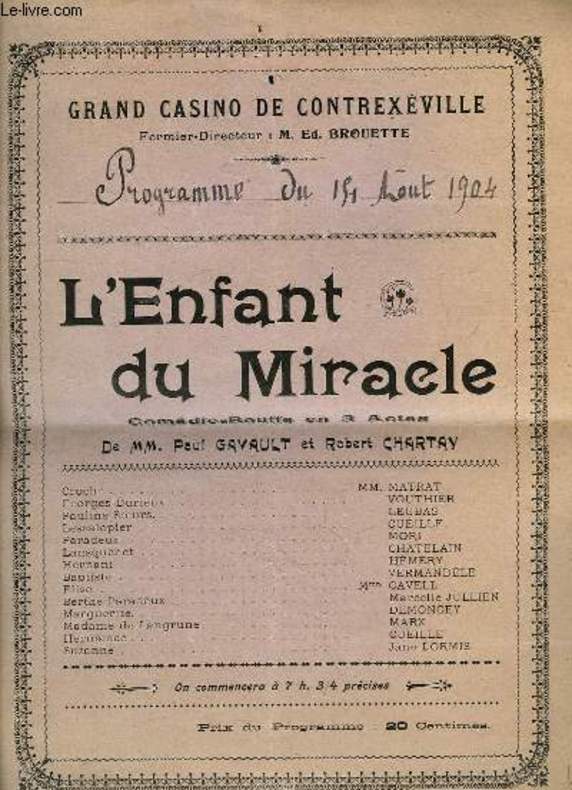
|
|
|
GRAND CASINO DE CONTREXEVILLE
"Programme du Grand Casino de Contrexeville, du 16 août 1904 : "" Les Maris de Léontine "". Comédie en 3 actes de M. Alfred Capus."
IMP. HERPIN A., Alençon.. 1904. In-12. Broché. Bon état, Couv. convenable, Dos satisfaisant, Intérieur frais. 1 page imprimée de 31.5 x 24 cm.. . . . Classification : 300-Affiches Divers
Ссылка продавца : RO80088893
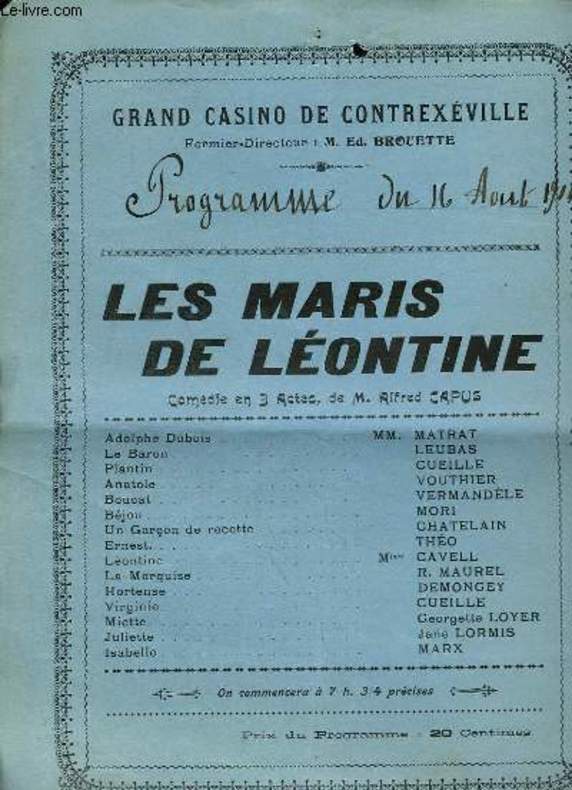
|
|
|
GRAND CASINO DE CONTREXEVILLE
"Programme du Grand Casino de Contrexeville, du 17 août 1904 : "" Les Sentiers de la Vertu "". Comédie en 3 actes, de MM. Robert de Flers et A. de Caillavet."
IMP. HERPIN A., Alençon.. 1904. In-12. Broché. Bon état, Couv. convenable, Dos satisfaisant, Intérieur frais. 1 page imprimée de 31.5 x 24 cm.. . . . Classification : 300-Affiches Divers
Ссылка продавца : RO80088894
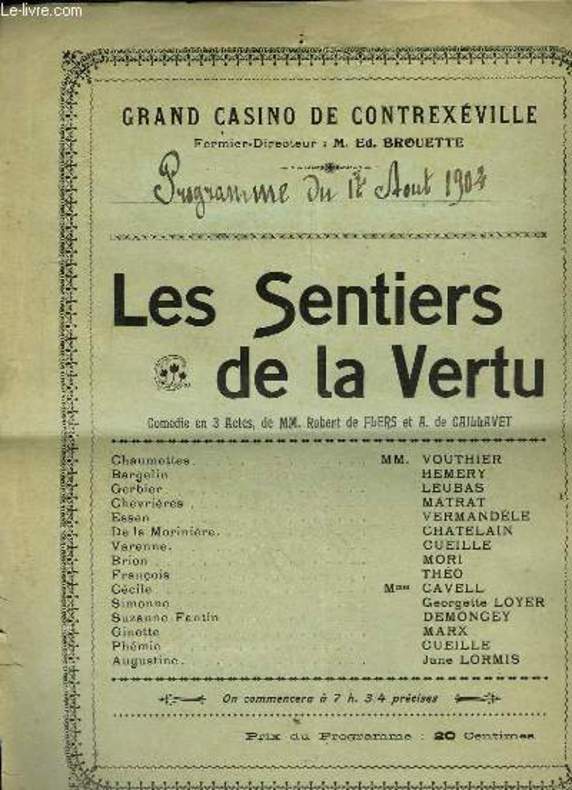
|
|
|
GRAND CASINO DE CONTREXEVILLE
"Programme du Grand Casino de Contrexeville, du 19 août 1904 : "" Le Détour "". Comédie en 3 actes de Henri Bernstein."
IMP. HERPIN A., Alençon.. 1904. In-12. Broché. Bon état, Couv. convenable, Dos satisfaisant, Intérieur frais. 1 page imprimée de 31.5 x 24 cm.. . . . Classification : 300-Affiches Divers
Ссылка продавца : RO80088895

|
|
|
GRAND CASINO DE CONTREXEVILLE
"Programme du Grand Casino de Contrexéville, du 10 Août 1904 : "" Les Surprises du Divorce "". Comédie en 3 actes, de MM. A. Bisson et A. Mars."
IMP. HERPIN A., Alençon.. 1904. In-12. Broché. Bon état, Couv. convenable, Dos satisfaisant, Intérieur frais. 1 page imprimée de 31.5 x 24 cm.. . . . Classification : 300-Affiches Divers
Ссылка продавца : RO80088890

|
|
|
GRAND CASINO DE CONTREXEVILLE
"Programme du Grand Casino de Contrexéville, du 12 août 1904 : "" L'Abbé Constantin "". Comédie en 3 actes de MM. Hector Crémieux et Pierre Decourcelle."
IMP. HERPIN A., Alençon.. 1904. In-12. Broché. Bon état, Couv. convenable, Dos satisfaisant, Intérieur frais. 1 page imprimée de 31.5 x 24 cm.. . . . Classification : 300-Affiches Divers
Ссылка продавца : RO80088891
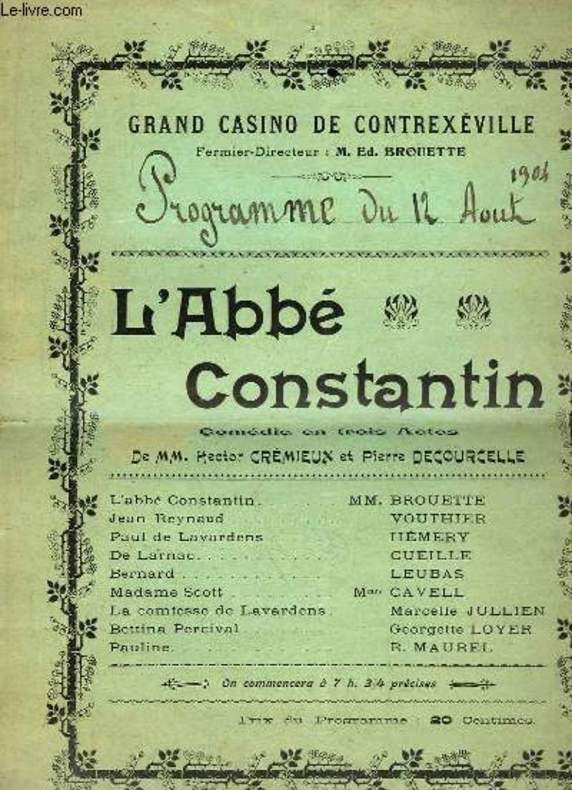
|
|
|
GRAND CASINO DE CONTREXEVILLE
"Programme du Grand Casino de Contrexéville, du 8 août 1904 : "" Heureuse "". Comédie en 3 actes de MM. Maurice Hennequin et Paul Bilhaud."
IMP. HERPIN A., Alençon.. 1904. In-12. Broché. Bon état, Couv. convenable, Dos satisfaisant, Intérieur frais. 1 page imprimée de 31.5 x 24 cm.. . . . Classification : 300-Affiches Divers
Ссылка продавца : RO80088888
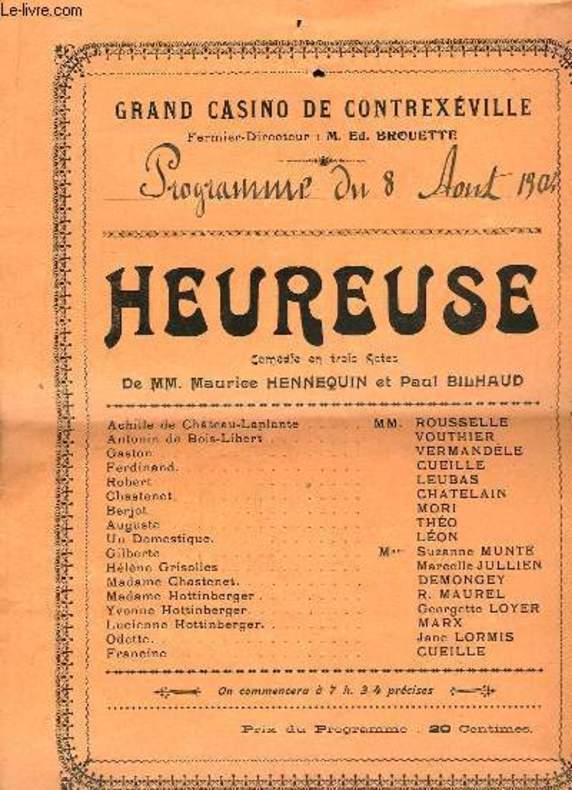
|
|
|
GRAND CASINO DE CONTREXEVILLE
"Programme du Grand Casino de Contrexéville, du 8 Août 1904 : "" La Passerelle "". Comédie en 3 actes, de Mme Fred Gressac."
IMP. HERPIN A., Alençon.. 1904. In-12. Broché. Bon état, Couv. convenable, Dos satisfaisant, Intérieur frais. 1 page imprimée de 31.5 x 24 cm.. . . . Classification : 300-Affiches Divers
Ссылка продавца : RO80088889
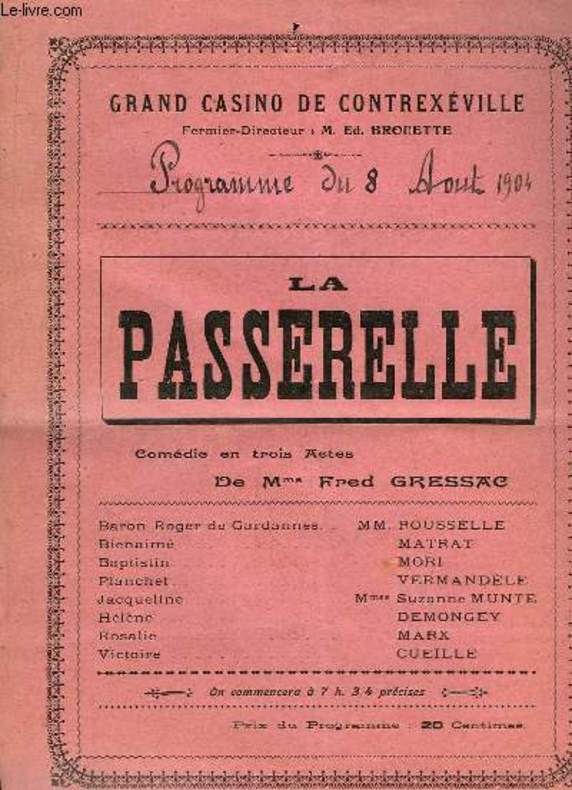
|
|
|
GRAND CASINO DE CONTREXEVILLE
Programme du Grand Casino de Contrexéville, du 5 août 1904 : L'Arlésienne. Pièce en 3 actes et 5 tableaux, paroles d'A. Daudet. Musique de Georges Bizet.
IMP. HERPIN A., Alençon.. 1904. In-12. Broché. Bon état, Couv. convenable, Dos satisfaisant, Intérieur frais. 1 page imprimée de 31.5 x 24 cm.. . . . Classification : 300-Affiches Divers
Ссылка продавца : RO80088886
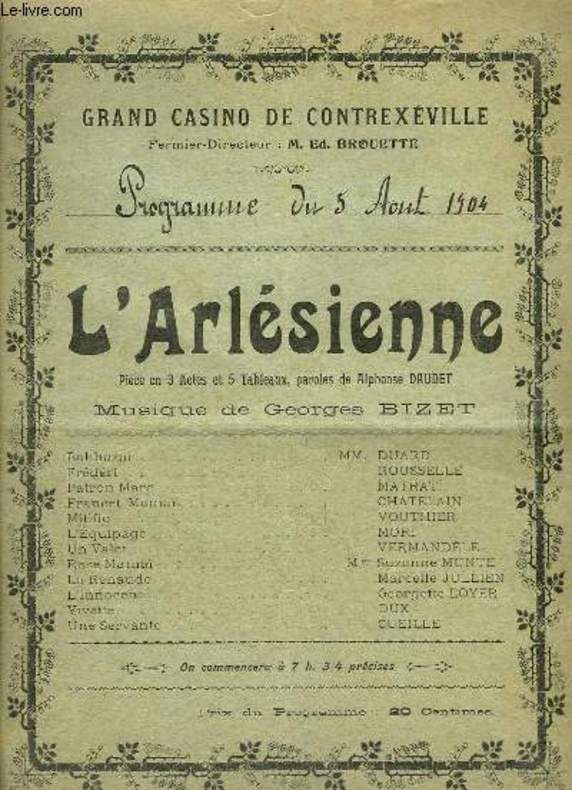
|
|
|
GRAND CASINO DE CONTREXEVILLE
Programme du Grand Casino de Contrexéville, du 7 août 1904 : Le Maitre de Forges. Pièce en 4 actes et 5 tableaux, de G. Ohnet.
IMP. HERPIN A., Alençon.. 1904. In-12. Broché. Bon état, Couv. convenable, Dos satisfaisant, Intérieur frais. 1 page imprimée de 31.5 x 24 cm.. . . . Classification : 300-Affiches Divers
Ссылка продавца : RO80088887
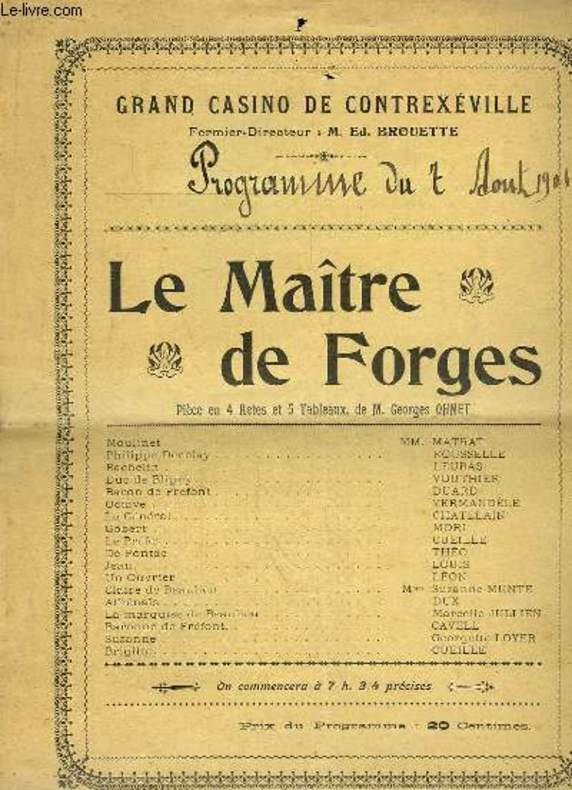
|
|
|